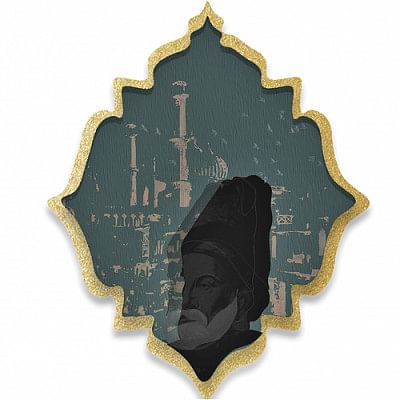'Murder at the Mushaira': A poet, a murder mystery, and a vivid portrait of 1857 India

In 1857, a wave of uprisings sparked through India in a bid to overthrow the British rulers. The Sepoy Mutiny was the first time Indian soldiers rose against the British East India Company in the face of corruption and unjust social reforms—including ruthless land taxes that unfairly penalised the working class. Set in this time period, Raza Mir's debut novel, Murder at the Mushaira (Aleph Book Company, 2021), is as much a murder mystery as it is a historical portrait.
On the morning of the 8th of Ramzan in 1273 AH, one British spy and "oily sycophant" by the name of Sukhan Khairabadi is found dead at a mushaira at the novel's beginning, after a night of ritualised poetry readings at Nawab Iftikhar Hasan's haveli. His death gains the highest priority among British officials as they assume it must have links to the brewing rumors of rebellion. As investigating officer, Kirorimal Chainsukh, is entrusted with the duty to find Khairabadi's killer, the fatal threat of meeting a deadline motivates him to seek the help of "amateur detective" and poet laureate Mirza Ghalib, whose wit, intelligence, knowledge, and connections with Delhi's elites make him a valuable asset for solving crime. Pressure from the British mounts, and Ghalib pulls in his forensics-specialist friend Master Ramchandra to get to the bottom of the mysterious crime.
As Chainsukh, Ramchandra, and a delightfully Sherlock-like Ghalib are thrust into the heart of the investigation, they stumble across a sea of suspects and secrets tied with the tensions brewing between the Company and rebel soldiers. Why was Khairabadi poisoned on top of being stabbed? How many killers were involved? Was his death truly connected with the brewing rebellion?
Previously the author of Ghalib: A Thousand Desires (Penguin, 2019) and The Taste of Words: An Introduction to Urdu Poetry (Penguin, 2014), Raza Mir's detour to fiction here is marked with sharp attention to detail, especially when he describes the food, clothing, architecture, ammunition, and science in the world of the novel. Dum biryani, kebabs, parathas and quail-stuffed goats mount the tables inside a shining haveli, abundant, yet "miraculously soft on the eye", and the prose soon absorbs the reader into a Delhi humming under the 19th century rule of emperors, landlords, and colonial powers; a Delhi in which newsprint is as valuable as gold, and a grand horizon is framed by the Red Fort, its Lahori Darwaza, and the canals of Chandni Chowk. This is more than vacant imagery, though, because they are filtered by the points of view of servers and house maids, whose outlook on the decadence casts subtle judgment on its careless cruelty and wastefulness. "What could one expect", Mir's narrator writes on the eve of the murder, "when one served the inebriated and depraved nobility of Delhi, who stood around and spouted empty erotic verse while two-faced foreighners stole their country from under their noses?"
Against this artful worldbuilding, the quick pace of the plot and a stiffness to the characters—whose list is rather long—make it hard to become emotionally invested in the story or its people. Their stories are most heartfelt when narrated through inner monologues; in conversation, their dialogues feel rigid and rehearsed.
In spite of this, a whirlwind of emotions befalls the reader towards the novel's climax, as one tragic event after another, each touched by the characters' acts of bravery and sacrifice, pile up. As we witness, also, the harassment of farmers by jagirdars and zamindars as a means of keeping large sections of people subjugated, Raza Mir's exploration of colonial violence through the lens of India and the Sepoy Mutiny is remarkable. The nod to Orhan Pamuk's My Name Is Red (Faber & Faber, 2001) is all too evident in the structure of the text, in the verses of poetry spearheading each chapter and its alternating narrators. But though present, the debate between originality and reproduction of art is secondary in this story.
Murder at the Mushaira, essentially, is interested in the distillation of larger historical and political narratives into the ordinary. It is a masterclass in evocative worldbuilding and the writing of crisp, clean prose. The pleasure of reading it would have been heightened with more seamless execution of some characters and scenes.
Sarah Anjum Bari is editor of Daily Star Books. Email: [email protected]
Shah Tazrian Ashrafi is a contributor.

 For all latest news, follow The Daily Star's Google News channel.
For all latest news, follow The Daily Star's Google News channel. 



Comments